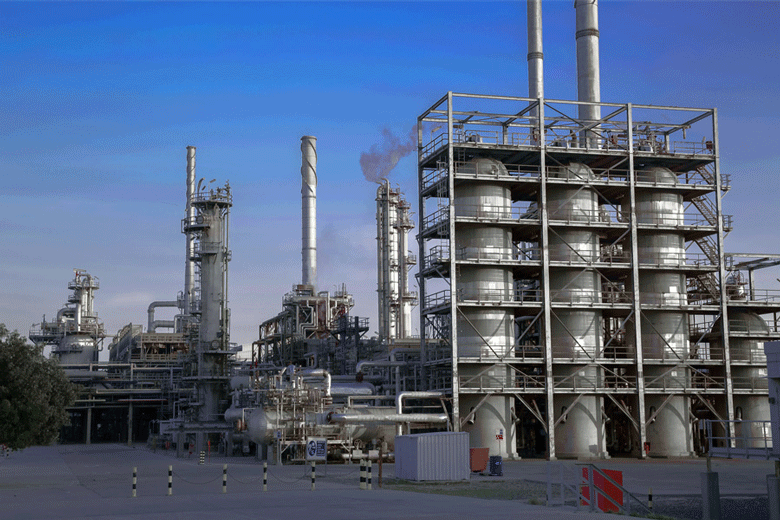

Kuwait’s oil and gas sector is heading for a game-changing year in 2020, with several downstream megaprojects due to come online after years of planning and construction.
Kuwait’s $12bn Clean Fuels Project (CFP) is expected to be completed in April 2020 and the $16bn Al-Zour refinery is set to become partially operational in June.
These facilities, which have a combined value of $28bn, are the two biggest projects being implemented as part of Kuwait’s 2030 downstream strategy.
Both are hugely ambitious with the potential to reshape the country’s economy. But having already had a long and rocky journey from first inception to execution, they could also still experience significant delays in their final stages.
Clean fuels
The CFP was first announced in 2007. In February 2008, Kuwait awarded technology contracts for the scheme to several international firms, including US engineering and technical services company Chevron Lummus.
Orders for 37 reactors and vessels were placed, but the project stalled in 2009.
Kuwait’s Supreme Petroleum Council reviewed the project in 2010 and the plans were finally approved in June 2011. Eventually its main three packages were awarded in 2014.
 The CFP will integrate the 270,000 barrel-a-day (b/d) Mina al-Ahmadi and 466,000 b/d Mina Abdullah refineries into a single complex, with new units added to increase total capacity to 800,000 b/d and improve the quality of output.
The CFP will integrate the 270,000 barrel-a-day (b/d) Mina al-Ahmadi and 466,000 b/d Mina Abdullah refineries into a single complex, with new units added to increase total capacity to 800,000 b/d and improve the quality of output.
A total of 16 new units are being built at the Mina al-Ahmadi refinery (pictured above) as part of the CFP, and 14 new units are being built at the Mina Abdullah refinery.
The first unit to come online as part of the CFP was announced in October by state-owned downstream operator Kuwait National Petroleum Company (KNPC), which is the client on the project.
It is a liquefied petroleum gas (LPG) processing unit at the Mina al-Ahmadi refinery with a capacity 2,264 b/d.
The higher-quality products produced once the CFP is completed and commissioned will conform to Euro-4 specifications.
The Euro-4 specifications came into force in Europe in 2005 and require sulphur levels to be reduced to 50 parts per million (ppm) for both diesel and petrol.
KNPC says that the sulphur content in gasoline produced after the CFP is completed will be reduced from 500 ppm to 10 ppm, and in gasoil from 5,000 ppm to 10 ppm.
Kuwait believes the fuels produced will be relatively low cost compared with similar fuels produced elsewhere and KNPC hopes this will lead to higher fuel exports to markets that have stricter environmental criteria for fuels, such as the US and Europe.
Al-Zour refinery
The products produced by the $16bn Al-Zour New Refinery Project also aim to meet higher environmental standards in an effort to increase exports to foreign markets.
Located 90 kilometres south of Kuwait, the facility will be one of the biggest refineries in the world when fully commissioned, providing 43 per cent of the entire country’s refining capacity.
It has been designed to process 615,000 b/d of light Kuwait export crude, or 535,000 b/d of mixed heavy crudes, and will produce Euro-5 specification fuel.
The client on the project is state-owned Kuwait Integrated Petroleum Industries Company (Kipic).
Kipic was formed in October 2016 to operate under Kuwait Petroleum Corporation (KPC), with the objective of executing and managing Kuwait’s refining, petrochemicals and liquefied natural gas (LNG) import projects in the Al-Zour downstream complex.
It has said that the Al-Zour refinery will supply 225,000 b/d of low-sulphur fuel oil (LSFO) to local power plants, as well as producing jet fuel, kerosene and naphtha feedstock for petrochemical plants.
However, when exactly the Al-Zour refinery will start producing at its nameplate capacity is unclear.
The acting CEO of Kipic, Hatem al-Awadhi, has said the refinery is only due to become partially operational in June 2020 and has given no official date for when the refinery will be fully operational.
Full commercial operation is unlikely to start before 2022, according to industry sources, with slow progress expected in the final commissioning phases of the project.
Economic boost
Even if it takes a long time to ramp up production at the Al-Zour facility, the fact that both the CFP and Al-Zour refinery are coming online in the same year could make a significant difference to Kuwait’s economy.
There will be significant potential for Kuwait to increase its market share in the US and Europe as exports rise. This could lead to a welcome boost in revenues.
The increased production of high-quality downstream products may also provide a boost to local businesses.
This could be particularly true for the petrochemicals sector and, further down the chain, entities that use petrochemicals to create high-value exports such as plastics.
Plans for a $10bn petrochemicals project within the Al-Zour downstream complex are already in place, and the front-end engineering and design (feed) for the facility is expected to be completed in May 2020.
You might also like...

Rainmaking in the world economy
19 April 2024

Oman receives Madha industrial city tender prices
19 April 2024

Neom seeks to raise funds in $1.3bn sukuk sale
19 April 2024

Saudi firm advances Neutral Zone real estate plans
19 April 2024
A MEED Subscription...
Subscribe or upgrade your current MEED.com package to support your strategic planning with the MENA region’s best source of business information. Proceed to our online shop below to find out more about the features in each package.





